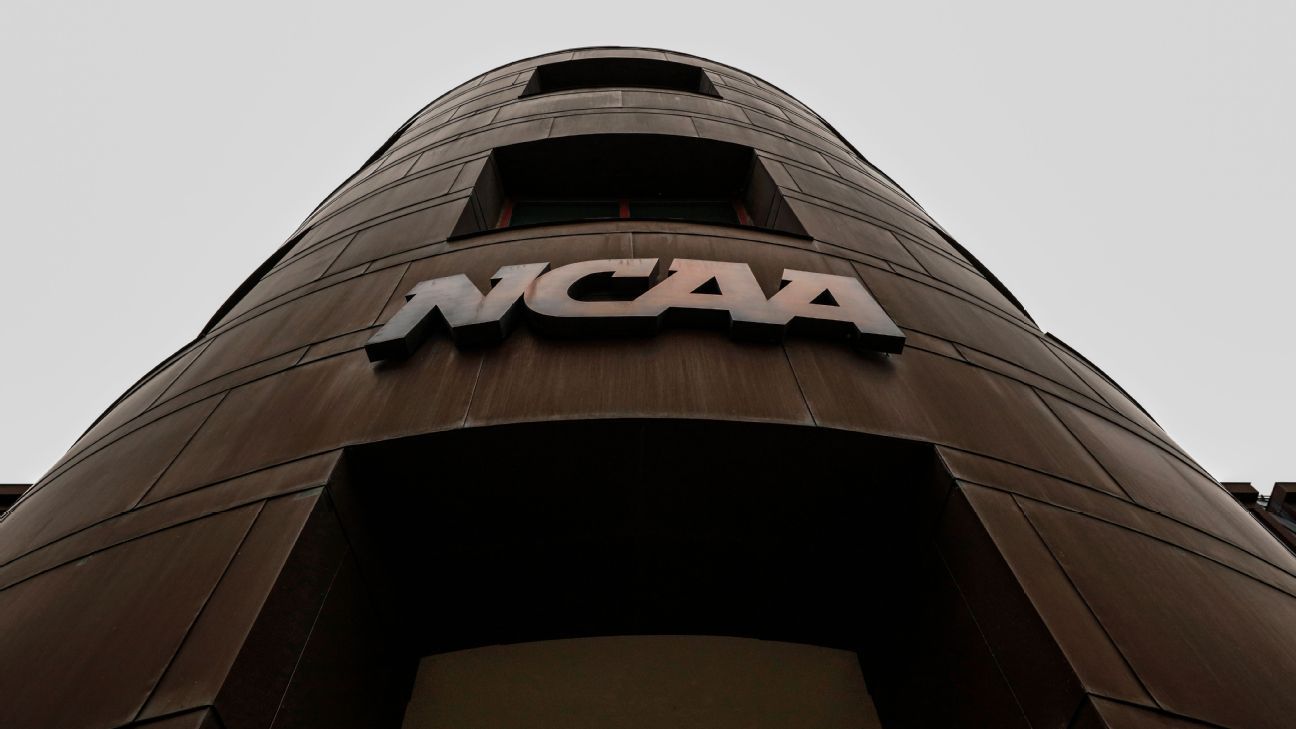The NCAA Division I Council has adjusted four guidelines used to decide immediate-eligibility waivers, all of which include greater involvement of athletic directors from an athlete’s original school. The guidelines also include potentially more restrictive language for when waiver requests should be granted.
Schools now must prove an athlete’s transfer is “due to documented extenuating, extraordinary and mitigating circumstances outside of the student-athlete’s control” in order to have a waiver approved, according to the updated guidelines obtained by ESPN. Previously, guidelines required just “documented, mitigating circumstances,” a phrase that many think led to an increase in approvals of waiver requests.
The council met this week at NCAA headquarters in Indianapolis. In a news release, the NCAA described the adjustments as “minor” and “intended to clarify the requirements, prompt more involvement from athletic directors and give guidance to members as they submit waivers.” Recent approvals and denials of waiver requests have brought enhanced attention to the process, which many in college sports have criticized for a lack of transparency.
In February, the committee on legislative relief began a comprehensive review of the waiver guidelines “to make sure they are in line with the membership’s expectations.”
The adjusted guidelines address four types of waiver requests: athletes who no longer have opportunities to play at their original school; athletes who are victims of egregious behavior that impacts their health and well-being; athletes who transfer because of a recent injury or illness to an immediate family member; and athletes wanting to be closer to home because of their own injury or illness, including mental health-related issues. Waiver requests in all four subjects now will require statements from the athletic director of an athlete’s original institution explaining the athlete’s reasoning for transferring.
Council chair Blake James, the athletic director at Miami, said athletic director involvement in the waiver process will benefit both athletes and schools.
“You have the leader of the department being able to look at the student and that experience and making sure we’re doing what we can to create the best student experience,” James told ESPN. “Having an understanding of the reasons why a young person is looking to leave and being a part of that process is something that should be happening on a more regular basis.”
James was involved in the waiver process of quarterback Tate Martell, who transferred from Ohio State to Miami in January and had his request approved in March. James described the adjusted guidelines as “not anything drastic” and designed to bring more clarification and leadership to the process.
“In speaking to colleagues, my opinion is we need to continue to look at the process and figure out ways to make it easier to understand,” James said. “That’s what some of the steps created today. It will create more transparency. Is this end-all? No. I’m sure we’ll continue to evaluate and make changes as needed that make sense to better the student experience.”
Attorney Tom Mars, who assisted in successful waiver requests of Ohio State quarterback Justin Fields, Michigan quarterback Shea Patterson and others, agreed with James that the revised guidelines clarify the process but he thinks they won’t help transfers play sooner.
“The only thing that’s been clarified in my mind is that it will now be more difficult for student-athletes to get a waiver,” Mars said. “That’s painfully clear.”
Waivers that claim athletes can no longer participate in their sport now must include statements from athletic directors outlining whether the athlete could return to their team, whether the athlete was dismissed, the athlete’s academic standing and the reason the athlete provided for their transfer. If an athlete’s new institution cannot document these areas, waiver requests would be denied.
In cases of waivers based on a family member’s health or their own health, the requests must be made within or immediately after diagnosis or learning of the illness or injury, and the new school must be located within 100 miles of the athlete’s home or the ill family member. Waivers based on athletes’ health issues must include “contemporaneous medical documentation” from a treating professional showing the athlete was being treated before transferring.
The NCAA’s committee on legislative relief recently denied a waiver request from Luke Ford, who transferred from Georgia to Illinois to be near his ailing grandfather. Ford’s hometown of Carterville, Illinois, where his grandfather resides, is located more than 100 miles from the university’s campus in Champaign. Virginia Tech offensive lineman Brock Hoffman is appealing the NCAA’s denial of his waiver request. Hoffman transferred from Coastal Carolina to be closer to his home in Statesville, North Carolina, where his mother is dealing with complications from a 2017 surgery to remove a non-cancerous brain tumor. Hoffman’s family said the initial waiver was denied because their home falls just outside the 100-mile radius in the guidelines, and because Hoffman’s mother’s condition has improved.
“The long-term solution to this problem is blindingly obvious,” said Mars, who assisted Ford on his appeal of the waiver denial and briefly worked on Hoffman’s case. “The legislative council should scrap the incomprehensible waiver guidelines and replace them with a rule allowing every student-athlete to transfer one time without penalty.”
